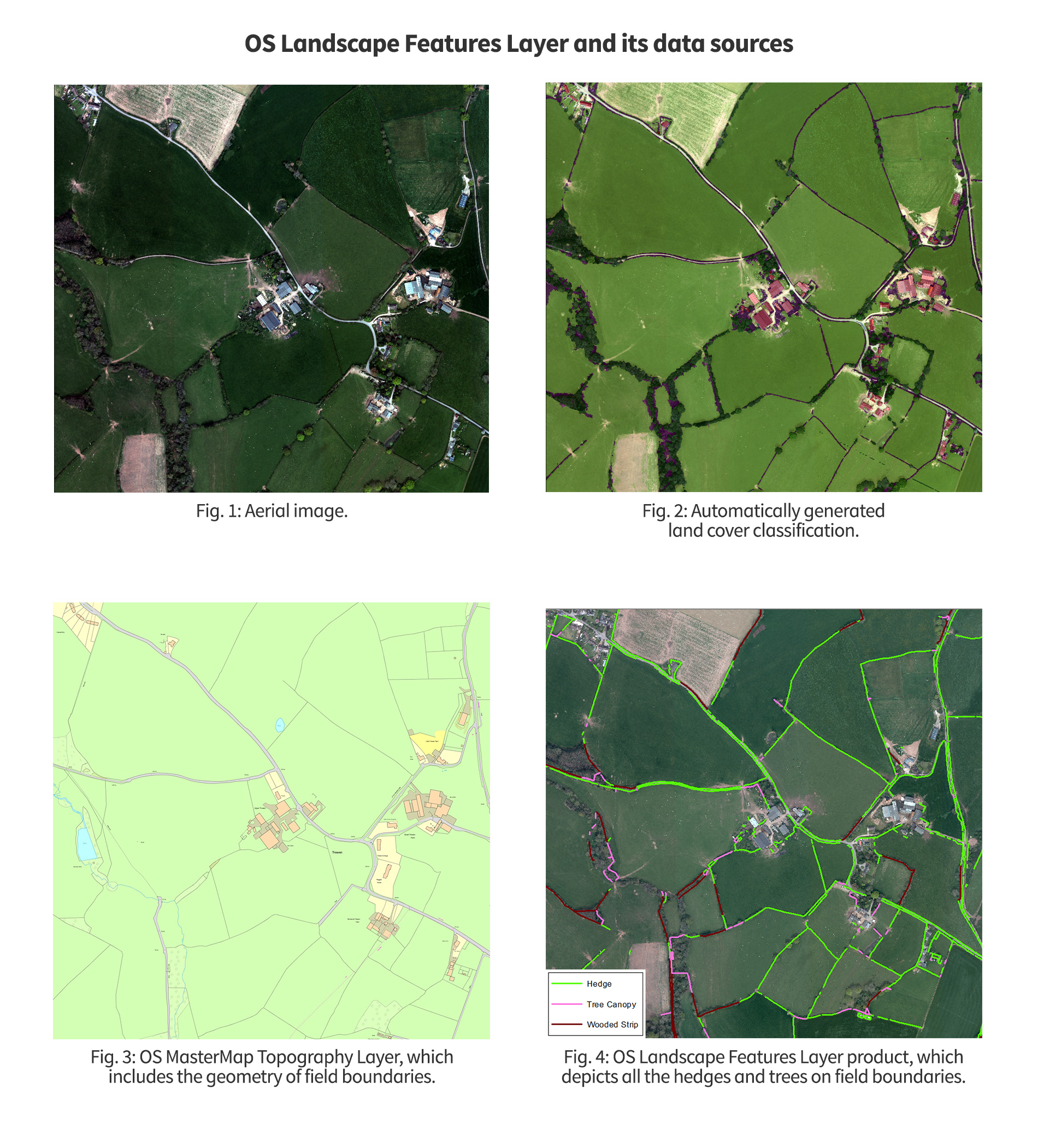
373,919km (232342 miles) of England’s farmland hedges have been accurately mapped to create a new digital dataset, the OS 'Landscape Features Layer'.
The new map will be used by the Rural Payments Agency (RPA), it will play an important role in the RPA’s administration of the Common Agriculture Policy (CAP).

The CAP Regulations require effective administrative controls to be established, and for hedges declared as Basic Payment Scheme (BPS) Ecological Focus Areas (EFAs), this means creating a control layer of mapped hedges against which subsidy claims can be checked. The aim of the project was to automate the identification and mapping of hedges in a repeatable business process using imagery and height data products, and producing consistent results that are far more effective than costly manual data capture.
The hedgerow’s value has risen in recent times, due to its capacity to protect against soil erosion and help reduce pollution, and with its increasing use in water supply management and flood control. The hedgerow manages to do all of this while still being home and larder to a rich collection of insects, birds and mammals. The mapping of hedges is beneficial to other environmental policy areas such as the Rural Development Countryside Stewardship Scheme, where the management and improvement of hedges are key options for improving the habitats for invertebrates and over-wintering birds.
Iconic feature of the English countryside
In the Autumn of 2014, the RPA asked Ordnance Survey (OS) to map every hedge in farmland England. Working closely alongside the RPA team, the OS Product and Remote Sensing teams identified a process of capturing this iconic feature of the English countryside.
The project team introduced a newly developed system to automatically capture the new hedge data layer. The system enables hedges to be identified and classified from high resolution aerial imagery and height information where OS digital mapping already shows field boundaries. The technology is now fully embedded into the Ordnance Survey process with seamless updates being made on a daily basis.
Currently OS has collected and mapped 95% of this data, with the final 5% in line to be processed in early 2017. The new dataset will continue to be maintained with change updates being supplied to the RPA.
Catherine Gladstone, OS Product Manager, says: “It’s been a fascinating project using new technology to deliver a vital dataset that supports our government colleagues and their customers (the farmer). As our technology continues to evolve and improve, so too does the depth and richness of our data, and with the data visualisations we produce, the opportunities for swifter and better decision making in government and business are often there. From a personal perspective, it’s pleasing that we’ve been able to help farmers that are using their hedges to protect the environment and encourage wildlife receive recognition.”
The RPA will be using OS’s newly created data layer to validate subsidy claims from 2017, where farmers and land managers have declared hedges as part of EFA. RPA will also provide farmers and land managers with this spatial information to incorporate into their land management plans.
